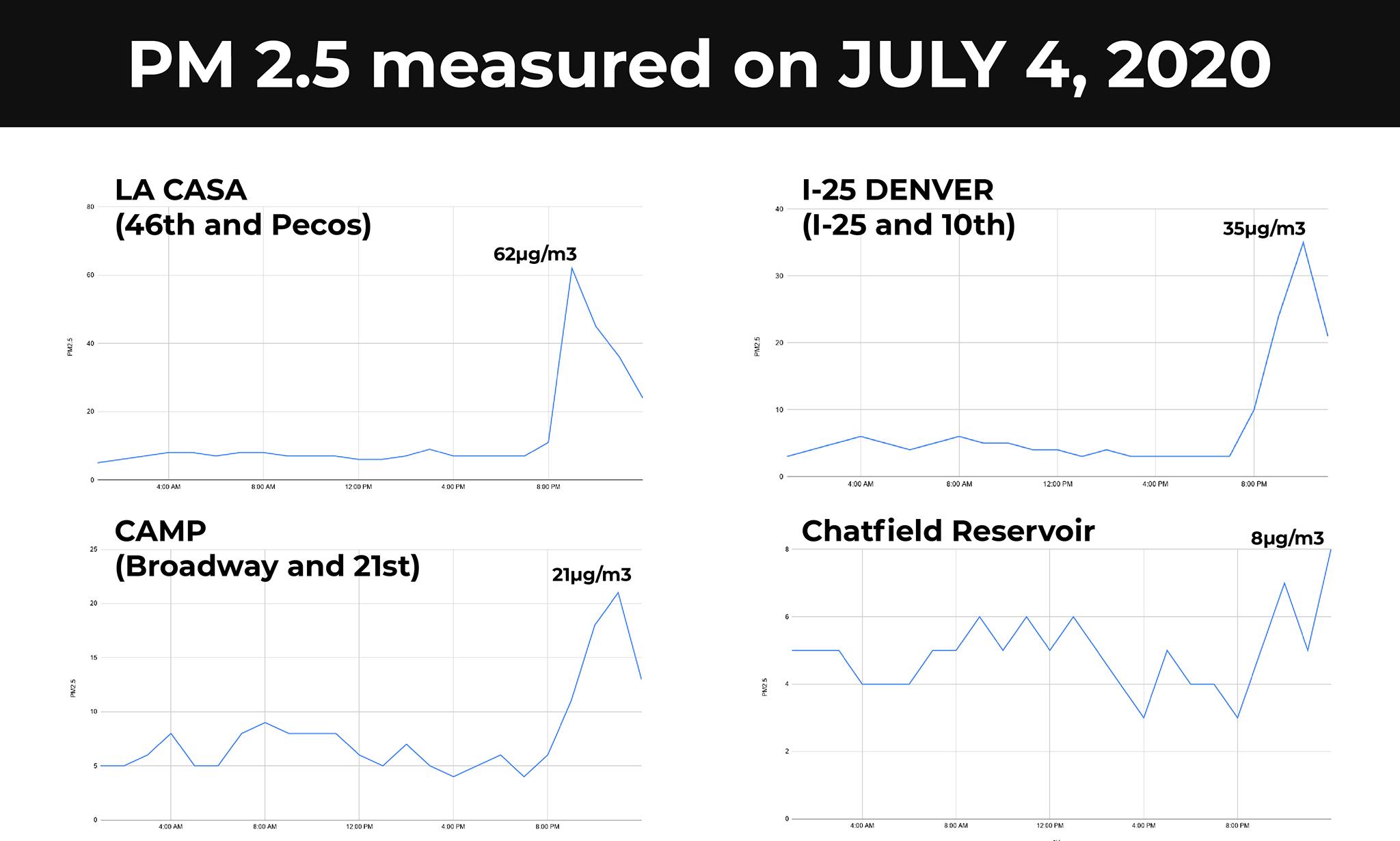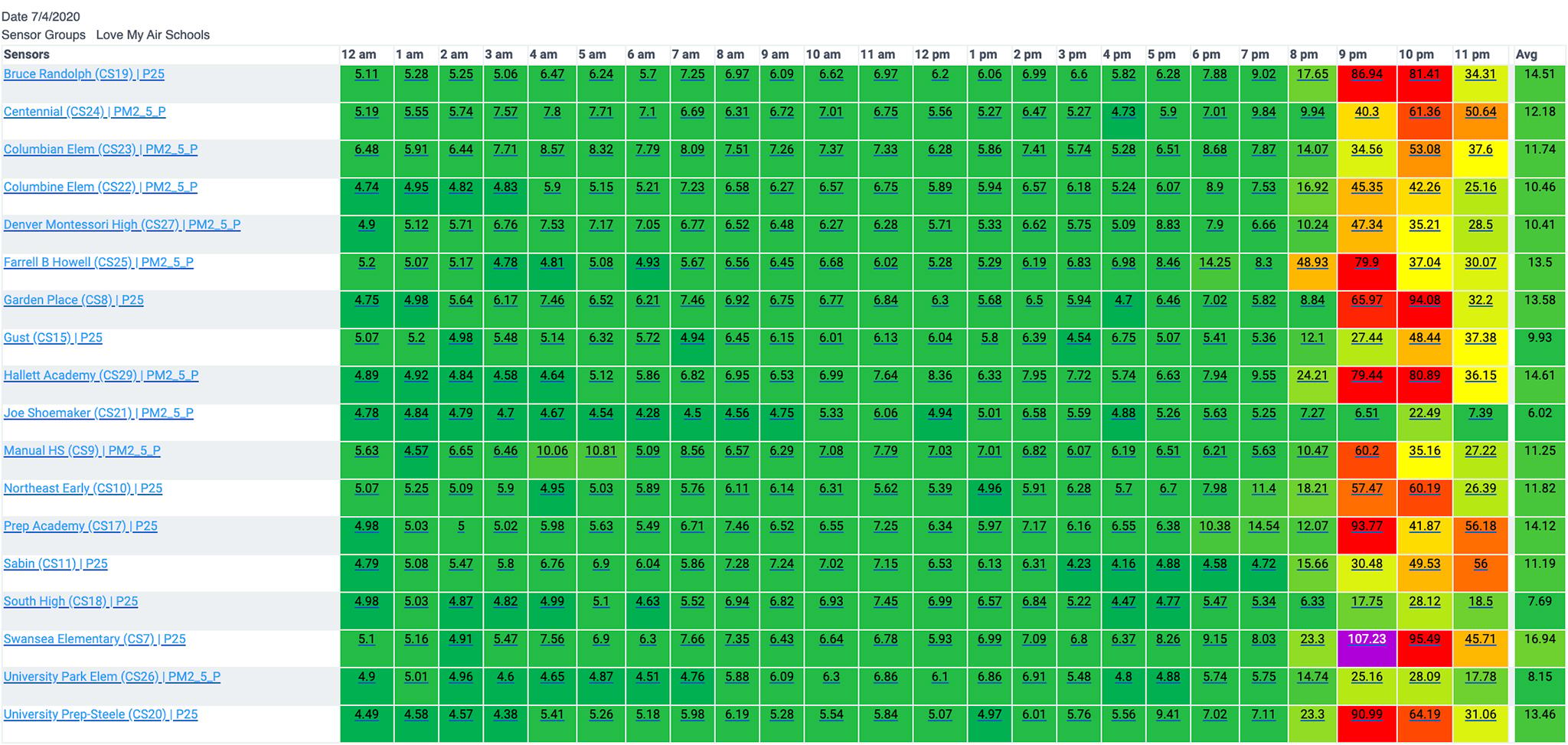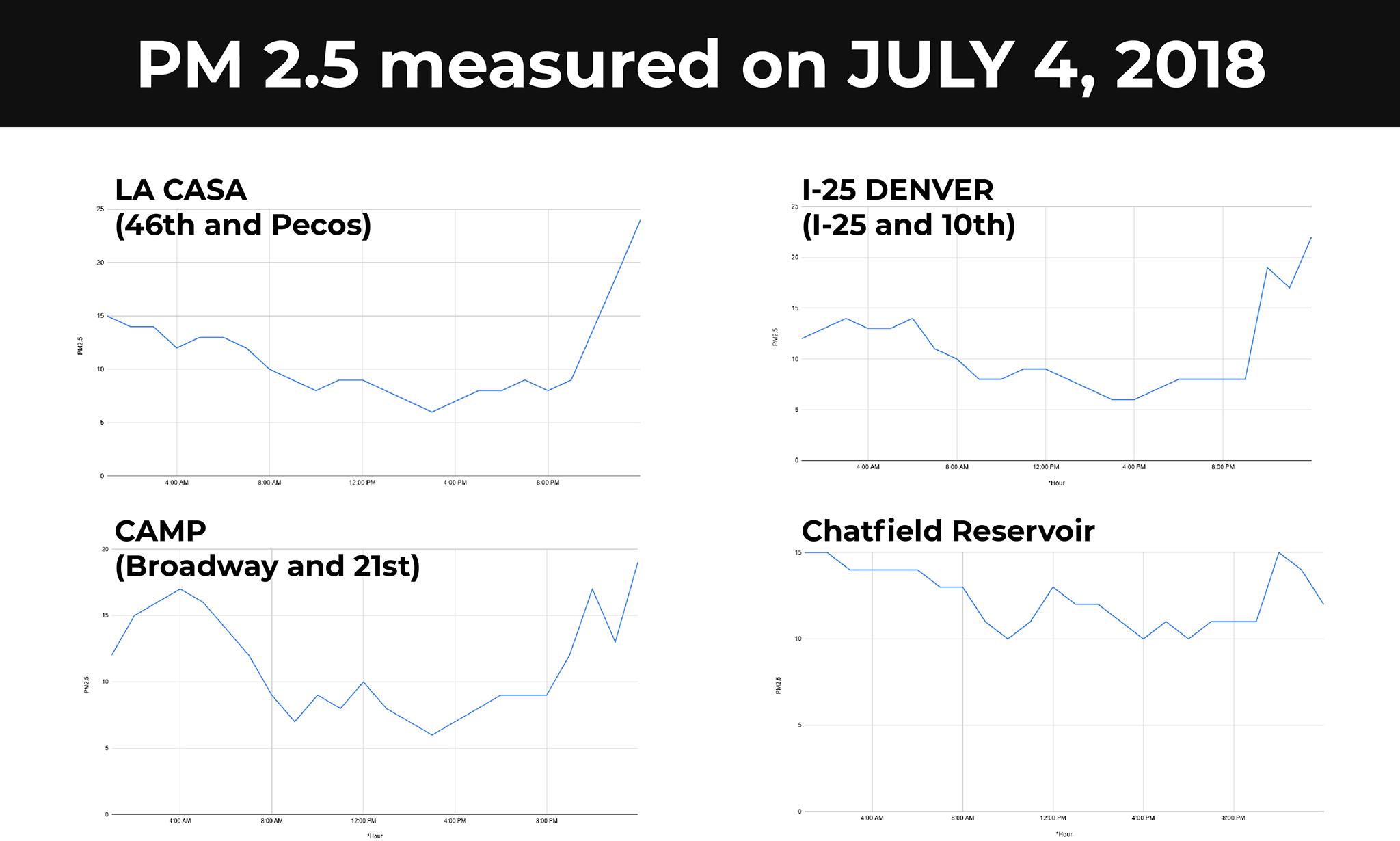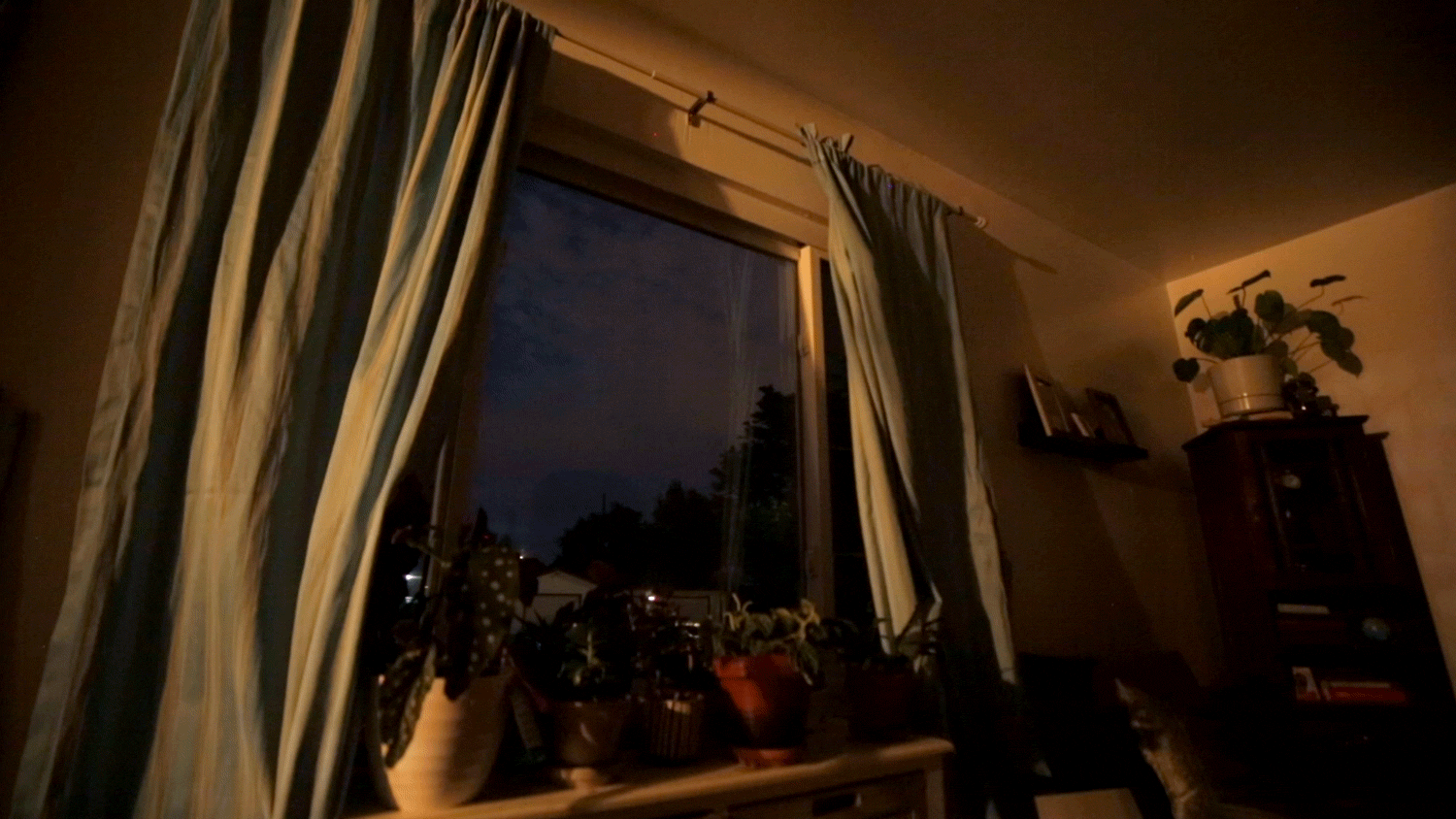It wasn't just nervous dogs and posters to NextDoor that noticed the Fourth of July fireworks in Denver. Pollution trackers picked up the explosions, which seemed to envelop the city over the weekend.
PM 2.5, a particulate pollution that measures a teeny 2.5 microns large, jumped from just seven micrograms per cubic meter to a whopping 62 in just a few hours Saturday. That's according to an EPA monitor called "La Casa," which sits near the intersection of 46th Avenue and Pecos Street in Sunnyside.
Such was the story with three other area air monitors, which each showed massive spikes between 8 p.m. and midnight Saturday on the 4th.
For some context, we've included a graph of the Chatfield Reservoir monitor, which is far enough away from the city's center to avoid a massive spike in PM readings, though it also picked up an uptick.

Michael Ogletree, who runs Denver's air quality program, said it's "a fair statement" to blame the sharp rises on fireworks. In addition to the EPA monitors around the city, Ogletree uses data from 18 sensors he's set up at area schools in recent years. Those readings showed PM pollution peaking between 9 p.m. and 10 p.m. Some showed numbers even higher than La Casa's.

Gordon Pierce, who oversees air quality monitoring for the Colorado Department of Public Health and Environment, said fireworks are likely the cause.
"We have seen similar patterns in previous years as well," he told us.
The state's data for July 4, 2019, was incomplete, so we took a look at 2018 instead. The graphs do show spikes, but none appear to be as steep as those measured in 2020. None of the measurements we looked at in 2018 rose above 25 micrograms per cubic meter.

In the same pre-holiday time frame between 2019 and 2020, Denver saw a 987 percent jump in fireworks complaints.












